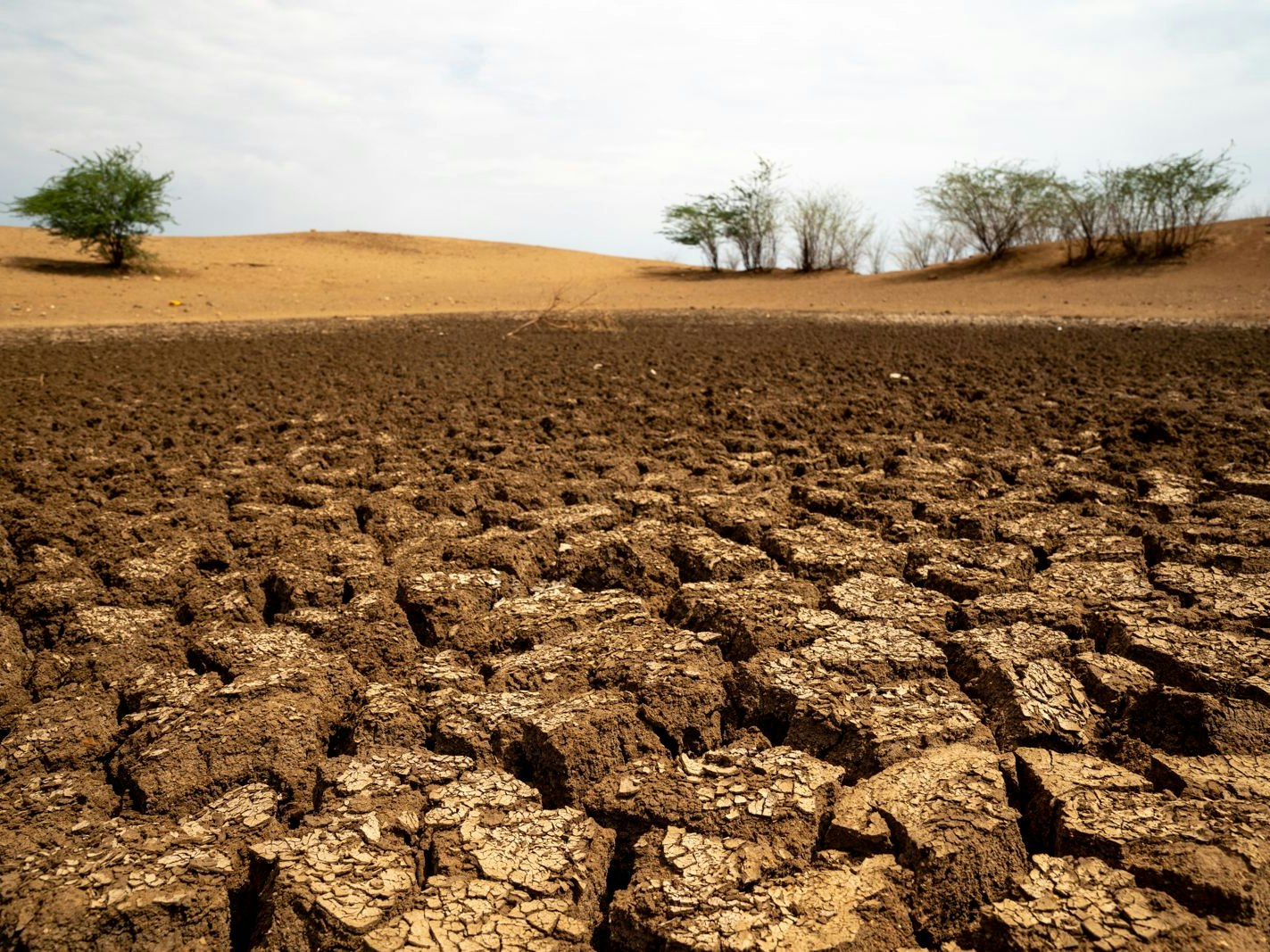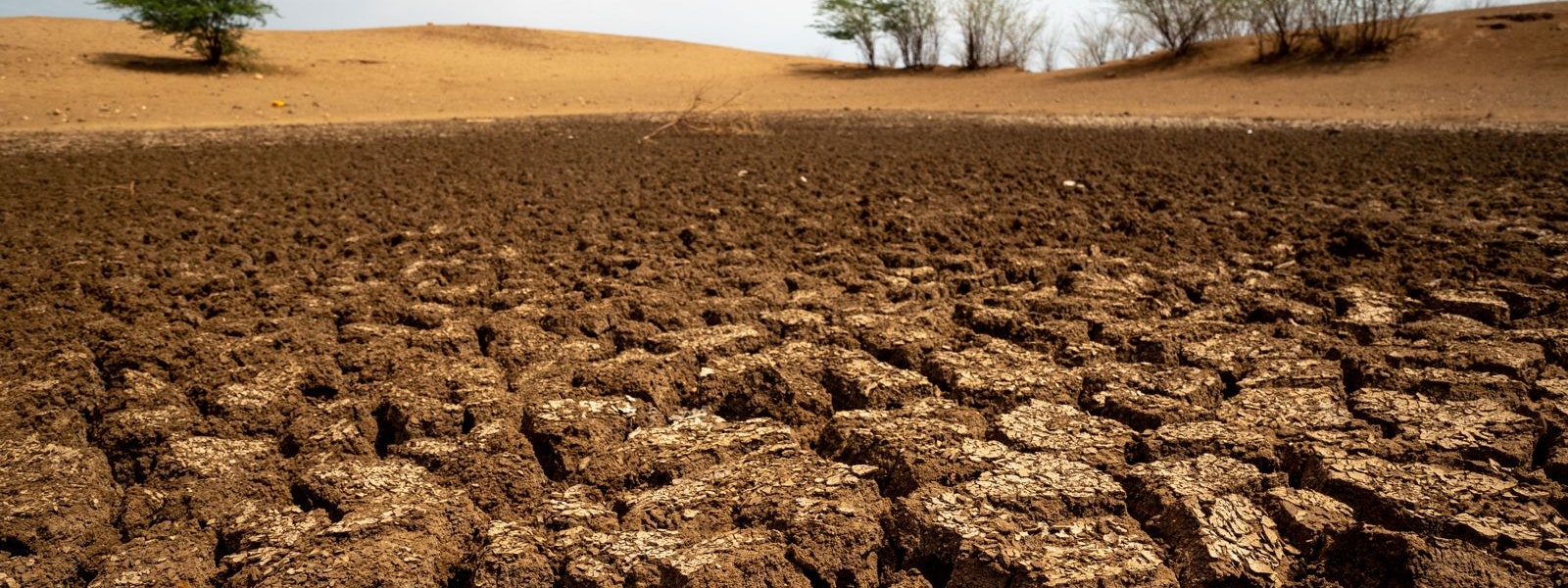Securing our Future: Expanding Scope of Land Restoration Funds to Impact All Geographies
Mar 11, 2025, Global
Executive Summary
Soil health is crucial in land restoration efforts and in addressing food insecurity, climate change, loss of livelihood, air and water pollution, and loss of biodiversity. The global narrative is slowly starting to recognize healthy soil as a solution to these challenges, and farmers as important stewards of this vital resource - but more needs to be done.
In order to meet the goals of land degradation neutrality, greater resources and effort need to be invested in restoring lands not yet severely degraded by supporting farmers in adopting a multitude of agroecological practices on annual/perennial croplands and rangelands. This must happen across all geographies, giving Asia and the Americas equal priority to Africa, as these regions hold the majority of global agricultural land.
2024 will mark the 30th anniversary of the UN Convention to Combat Desertification (UNCCD). The signatories of this document acknowledge the UNCCD for being the driving force behind Sustainable Development Goal 15 and Land Degradation Neutrality - the only legally binding framework set up to address drought and desertification for 197 Parties - and its multitude of programs and projects on the themes of Afforestation and Reforestation, Agroforestry, Water Harvesting and Management, Grassland Restoration and Management, Watershed Management, Community-Based Natural Resource Management and Integrated Land Use Planning.
In continued support of the UNCCD's tireless efforts over the last 3 decades to halt and reverse land degradation, this document, endorsed by UNCCD-accredited organizations, and organizations working for soil health and sustainable agricultural prosperity, requests the UNCCD to:
1. Accelerate preventative action across all geographies for lands not yet severely degraded
2. Allocate more funding to projects involving annual / perennial cropland and rangelands
The group of organizations endorsing this document are committed to reversing and preventing land degradation, meeting the UNCCD’s G20 GLI target (to achieve a 50% reduction in global land area degradation by 2040), and realizing the varied benefits that accrue from sustainably managed lands.
Background
The rate of land degradation and desertification is accelerating rapidly across the globe. According to data from nations that have disclosed their land degradation statistics on the UNCCD Land Degradation Data Dashboard, at least 100 million hectares of land have degraded each year between 2015 and 2019. This increase in degradation is echoed in FAO reports that state:
24 billion tons of fertile soil are lost to erosion every year
Almost 2 billion hectares of land worldwide, home to 1.5 billion people, are affected by degradation
In the tropical world, India saw 32% of its land degrade from 2015 - 2019, with 25% undergoing desertification. In greater southern Asia, the figures increased from 4.49% of land degradation in 2015 to 10.41% in 2019. Mexico had 56.69% of its lands degraded in 2015, which increased to 71.93% in 2019. 163 million hectares of land in Sub-Saharan Africa and 108 million in Latin America and the Caribbean have undergone degradation since 2015. In subtropical and temperate regions, 20% of the total Central Asian land area is degraded, equivalent to roughly 80 million hectares, while Western Asia saw an increase of degraded land from 4.68% to 11.73% from 2015 to 2019, respectively.
Soil degradation exacerbates global food insecurity, the effects of climate change, loss of livelihood for the 1.23 billion people who depend on agri-food systems, water and air pollution, and loss of biodiversity. Reversing severely degraded lands demands substantial resources over an extended period. However, restoring lands that are not yet severely degraded, but are at risk of being so without intervention, can save resources, prevent numerous consequences of severe land degradation, and allow for more efficient restoration within a shorter timeframe than if they are left to degrade further. Therefore, restoration of lands not yet severely degraded needs to become as urgent of a priority as restoring lands already severely degraded.
Problem Statement
UNCCD’s portfolio projects like the Great Green Wall Initiative, Changwon Initiative, International Drought Resilience Alliance and the G20 Global Land Initiative, demonstrate a strong emphasis on tree-based interventions, technical capacity building and resource mobilisation for land restoration projects. A 2023 review of the portfolio distribution of the LDN Fund (Fig.2), the main financial vehicle of the UNCCD, reflects that 45% of the portfolio is allocated for agroforestry, 36% for planted forests, and 19% for agro-ecological transition interventions - again with tree-centric projects.
The LDN portfolio’s present focus on agroforestry and tree-based farming is commendable. However, the portfolio prioritises tree-based interventions without addressing the significant need to invest in various agroecological solutions, particularly those that can rebuild soil organic matter for annual / perennial croplands and rangelands.
A 2020 FAO report states that of the approximately 5 billion hectares of agricultural land area, one-third is used for cropland while two-thirds is rangelands. The percentage of cropland under annual/perennial crops is 90%, which is far higher than that under agroforestry (10%). Given the vast size differences between these types of lands, we request greater UNCCD resources and efforts be directed towards preserving and restoring annual / perennial croplands and rangelands.
Indeed, land loss due to degradation is happening across all agro-pedo-ecological zones worldwide (Fig. 1). Although projects currently funded by LDN are spread across tropical, subtropical, and temperate zones, they are concentrated in semi-arid regions in tropical sub-Saharan Africa. The largest share of agricultural land area is in Asia, followed by the Americas, and Africa., Therefore, we request more UNCCD projects to include all these geographies, and thus support a larger number of farmers in the transition to agroecology. Robust farmer hand-holding and financial support is crucial to address land degradation on a global scale.
Fig. 1 : Data from UNCCD Dashboard, based on 2022 national reports from 126 Parties.
Fig. 2: Mirova 2023 Impact Report.
Solution
Given the extent of land degradation globally, it is vital that the UNCCD invests in:
Greater allocation of LDN and similar funds to preserve and restore lands not yet severely degraded, which requires less time, effort, and resources than restoring severely degraded lands.
Expanding the scope of fund allocation to restore annual/perennial croplands and rangelands, by supporting farmers in adopting various agroecological solutions that increase soil organic matter.
Expanding its regions of work to include major pilots in diverse agro-pedo-climatic zones (giving Asia and the Americas equal priority to Africa), to rapidly establish the successful large-scale implementation of agroecological principles under differing conditions.
By witnessing demonstrable models in this direction, farmers worldwide can be inspired and convinced of the possibility of restoring their own degrading soils with the right regenerative agroecological practices implemented at the right time.
With the main causes of agricultural land degradation involving conventional farming practices that deplete soil organic matter (such as excess use of fertilisers and chemicals, monocultures, and constant soil disturbance), farmers need strong support in the following areas to transition to regenerative agroecological practices:
Learning about the importance of preserving and restoring soil and land health for ecological well-being as well as the connection to their sustained livelihoods.
Learning that degrading and degraded lands can be restored with the right management practices that improves soil health and biodiversity.
Adopting agroecology (encompassing conservation agriculture, regenerative agriculture, agroforestry, or any practices or systems that maintain living soils through raising SOM levels), and receiving similar focus and funding as farmers practicing tree-based agriculture.
By resolving to support projects that help farmers adopt regenerative agroecological practices and return organic matter to the world’s agricultural soils, the Parties to the Convention can achieve land degradation neutrality targets and improve food security, reduced pollution, improved biodiversity, socio-economic abundance and ecological well-being.
Should this be of interest, we would kindly request your response through this form.
Response Form
About the international “4 per 1000” Initiative
Launched at UNFCCC COP 21 in December 2015, the international "4 per 1000 Initiative: Soils for Food Security and Climate" aims to show that agriculture, and in particular agricultural soils through natural carbon sequestration, can provide concrete solutions to the challenge of climate change while at the same time meeting the challenge of food security by implementing agricultural practices adapted to local conditions. Based on solid scientific documentation, the international "4 per 1000" Initiative encourages all voluntary actors around the world to engage in a transition towards a regenerative, productive, highly resilient agriculture, based on appropriate management of land and soil such as agroecology. More information on 4per1000, and by email at: [email protected]
About Save Soil Movement
Save Soil (backed by the UNCCD, UNEP, WFP, UNFAO, IUCN amongst others) is a global people’s movement to address the soil degradation crisis, and support governments in implementing soil health policies to establish a minimum 3-6% organic matter in agricultural soil (based on regional conditions). The Save Soil Movement’s ‘Cauvery Calling’ initiative has helped farmers multiply their income 3 to 5 times by helping over 220,000 farmers transition to tree-based agriculture and training over 27,000 farmers in regenerative agriculture practices.
Endorsements from NGOs
4p1000
Conscious Planet - Save Soil
ACADGOSHA, Democratic Republic of Congo
Action Humaine Pour le Développement Intégré au Sénégal (AHDIS), Senegal
APPUI SOLIDARITÉ POUR LE RENFORCEMENT DE L AIDE AU DÉVELOPPEMENT, Mali
Regional Centre for International Development Cooperation - RCIDC, Uganda
El Ghad Essihi pour le Développement et la Protection de l'Environnement en Mauritanie(EGEDPEM), Mauritanie
Association Communale des Jeunes de Bossofala contre la Désertification AJBLD, Mali
Action pour le Respect et la Protection de l'Environnement-ARPE, Cameroon
Educating Girls and Young Women for Development-EGYD, Zambia
Regional Centre for International Development Cooperation - RCIDC , Uganda
Action Jeunesse pour le Développement, Congo Brazzaville
ABIBINSROMA FOUNDATION, Ghana
Zero waste Antigua Barbuda, Antigua & Barbuda
Plant for the Planet ITALIA ODV,Italy
Citizenship and sustainable development association (ACDD), Tunisia
“National Conservation Initiative” Corporate fund, Kazakhstan
Sudanese Environment Conservation Society (SECS), Sudan
Global Environment Centre, Malaysia
LASST ES UNS WAHR MACHEN!

